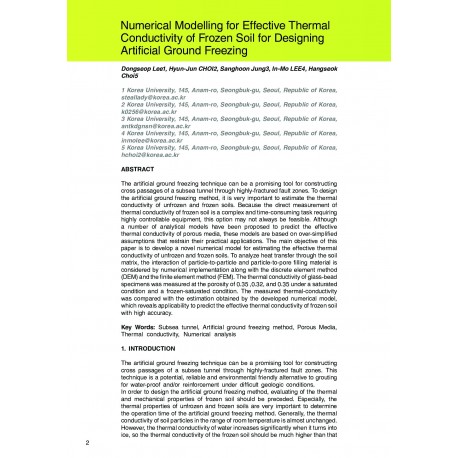Cart
0
0
No document
0,00 €
Total
Document successfully added to your shopping cart
Quantity
Total
There are 0 items in your cart.
There is 1 item in your cart.
Total documents
Total shipping
To be determined
Total
Search & filter
Search for a publication
Search & filter

Numerical Modelling for Effective Thermal Conductivity of Frozen Soil for Designing Artificial Ground Freezing
2607_numerical_modelling_for_eff
H. Choi / D. Lee / I.-M. Lee / H.-J. Choi / S. Jung
The artificial ground freezing technique can be a promising tool for constructing cross passages of a subsea tunnel through highly-fractured fault zones. To design the artificial ground freezing method, it is very important to estimate the thermal conductivity of unfrozen and frozen soils. Because the direct measurement of thermal conductivity of frozen soil is a complex and time-consuming task requiring highly controllable equipment, this option may not always be feasible. Although a number of analytical models have been proposed to predict the effective thermal conductivity of porous media, these models are based on over-simplified assumptions that restrain their practical applications. The main objective of this paper is to develop a novel numerical model for estimating the effective thermal conductivity of unfrozen and frozen soils. To analyze heat transfer through the soil matrix, the interaction of particle-to-particle and particle-to-pore filling material is considered by numerical implementation along with the discrete element method (DEM) and the finite element method (FEM). The thermal conductivity of glass-bead specimens was measured at the porosity of 0.35 ,0.32, and 0.35 under a saturated condition and a frozen-saturated condition. The measured thermal-conductivity was compared with the estimation obtained by the developed numerical model, which reveals applicability to predict the effective thermal conductivity of frozen soil with high accuracy.


